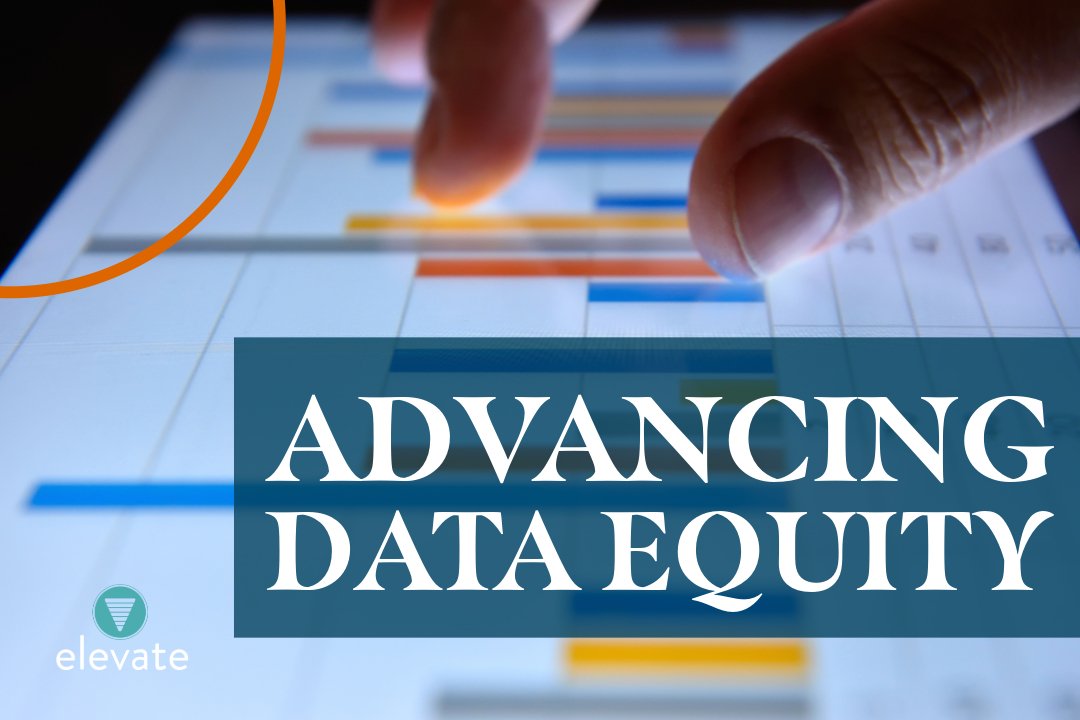Advancing data equity
Written by Jessica Gibbons-Benton
As more and more of our personal and organizational decisions are driven by data, the role of data in evaluation processes has become more and more important. Through opportunities to partner with our clients, the Elevate team knows evaluation can serve as a critical tool for decision-makers, funders, and stakeholders to make informed choices about resource allocation and program improvement. However, a key concept we try to infuse into our evaluation work and encourage our clients to consider as well is the concept of data equity, which highlights the need for fair and equitable access to, and use of, data in evaluation processes.
What is Equity?
Data equity in evaluation refers to the fair and just distribution of data resources, opportunities, and benefits among all individuals and communities involved in or affected by an evaluation. It encompasses various aspects, including:
Data Access: Ensuring that all relevant stakeholders have equal access to data, regardless of their socioeconomic status, race, ethnicity, or other demographics.
Data Collection: Collecting data that accurately represents the diverse perspectives, experiences, and voices of the communities and individuals being evaluated.
Data Analysis: Analyzing data in ways that do not perpetuate bias, stereotypes, or inequities, and that acknowledge the context and social determinants that influence the data.
Data Use: Using evaluation findings to inform equitable decision-making and resource allocation, with a focus on addressing disparities.
Why Data Equity Matters in Evaluation
Addressing Bias and Disparities: Without data equity, evaluations can perpetuate existing biases and inequalities. Data that is not representative or fails to capture the experiences of certain groups can lead to misguided policies and resource allocation decisions.
Enhancing Program Effectiveness: A more equitable approach to data ensures that programs and policies are designed and improved based on a comprehensive understanding of their impact on diverse populations. This ultimately leads to more effective interventions.
Building Trust: Communities and stakeholders are more likely to trust the evaluation process and its outcomes when they feel their voices and experiences are represented in the data.
Promoting Social Justice: Data equity aligns with broader efforts to promote social justice and reduce disparities. By acknowledging and addressing structural inequities in data, we move closer to a more just and equitable society.
Strategies for Advancing Data Equity in Evaluation
Community Engagement: Where possible, involve the community and stakeholders in all stages of the evaluation process. Their insights and lived experiences are invaluable for collecting and interpreting data.
Diverse Data Sources: Utilize diverse data sources, including qualitative data and disaggregated data, to capture a more comprehensive picture of the evaluation's impact.
Cultural Competency: Build cultural competency within the evaluation team to ensure that data collection and analysis are sensitive to the cultural nuances of the population being evaluated.
Transparency: Be transparent about data sources, methodologies, and limitations. Acknowledge potential biases and work to mitigate them.
Equity-Focused Metrics: Work to develop evaluation metrics that specifically assess equity-related outcomes, ensuring that the evaluation process itself contributes to promoting data equity.
Data equity in evaluation is not just an abstract concept; it's a critical element for ensuring that evaluation processes are fair and inclusive. As we continue to rely on data to make informed decisions about policies, programs, and resources, our evaluation efforts should prioritize the principles of data equity. By doing so, we can contribute to a more equitable society, where the benefits of data are accessible to all, regardless of their background or circumstances.


